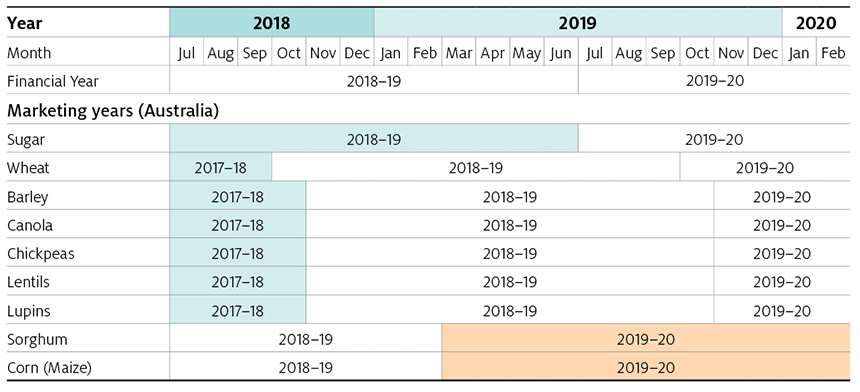December 2020
ABARES has changed the way that crop balance sheets are reported. From December 2020, all Australian crop balance sheet components (stocks, production, consumption and trade) will be published and forecast on a marketing year basis unless otherwise specified. The marketing year for each crop begins around the time that crop harvesting usually commences. For purposes of aggregation and consistency, ABARES designation of marketing years may differ from those used in particular regions or by other agencies.
The labelling convention for marketing years is the same as that used for financial years. That is, the year listed first begins a marketing year (eg. 2019–20 begins in 2019—see Figure 1).
Figure 1 Naming conventions for Australian crop marketing years
This change aligns ABARES with international practice. Prior to this, some crop balance sheets reported by ABARES showed production on a financial year basis alongside the other balance sheet components on a marketing year basis. In some instances where financial year and marketing year labels differed, for instance for grain sorghum, this required users to be aware of this convention and account for it in their analysis. In effect, the production shown as having occurred in the previous year needed to be 'pulled forward' to the correct marketing year. This adjustment will no longer be required as all balance sheets will report the production, consumption, trade and stocks for each marketing year, allowing users to sum down the column without requiring any further adjustment.
References
Vogel, F.A & Bange, G.A (1999) Understanding USDA Crop Forecasts, United States Department of Agriculture, Miscellaneous Publication No. 1554, Washington.

